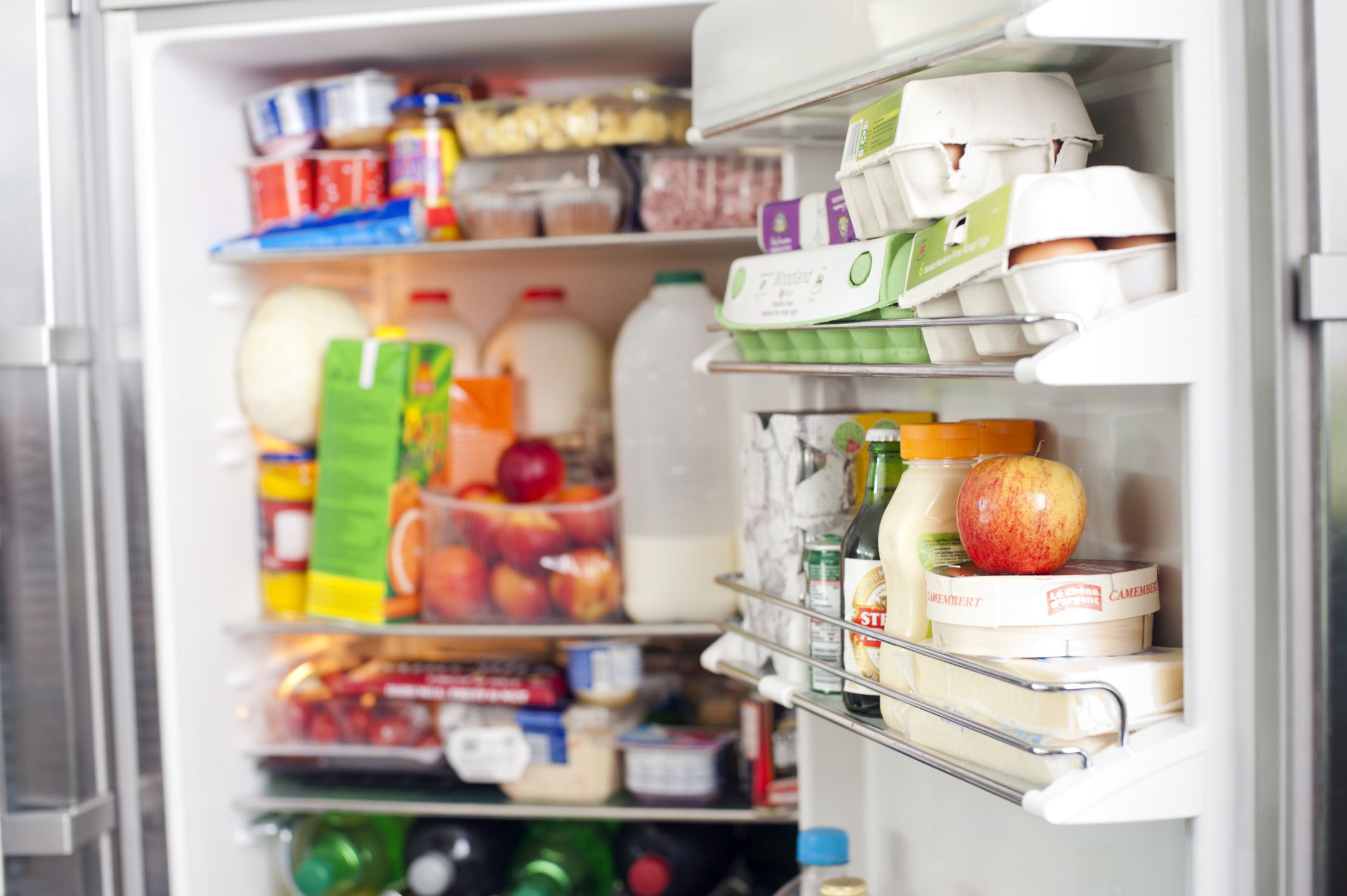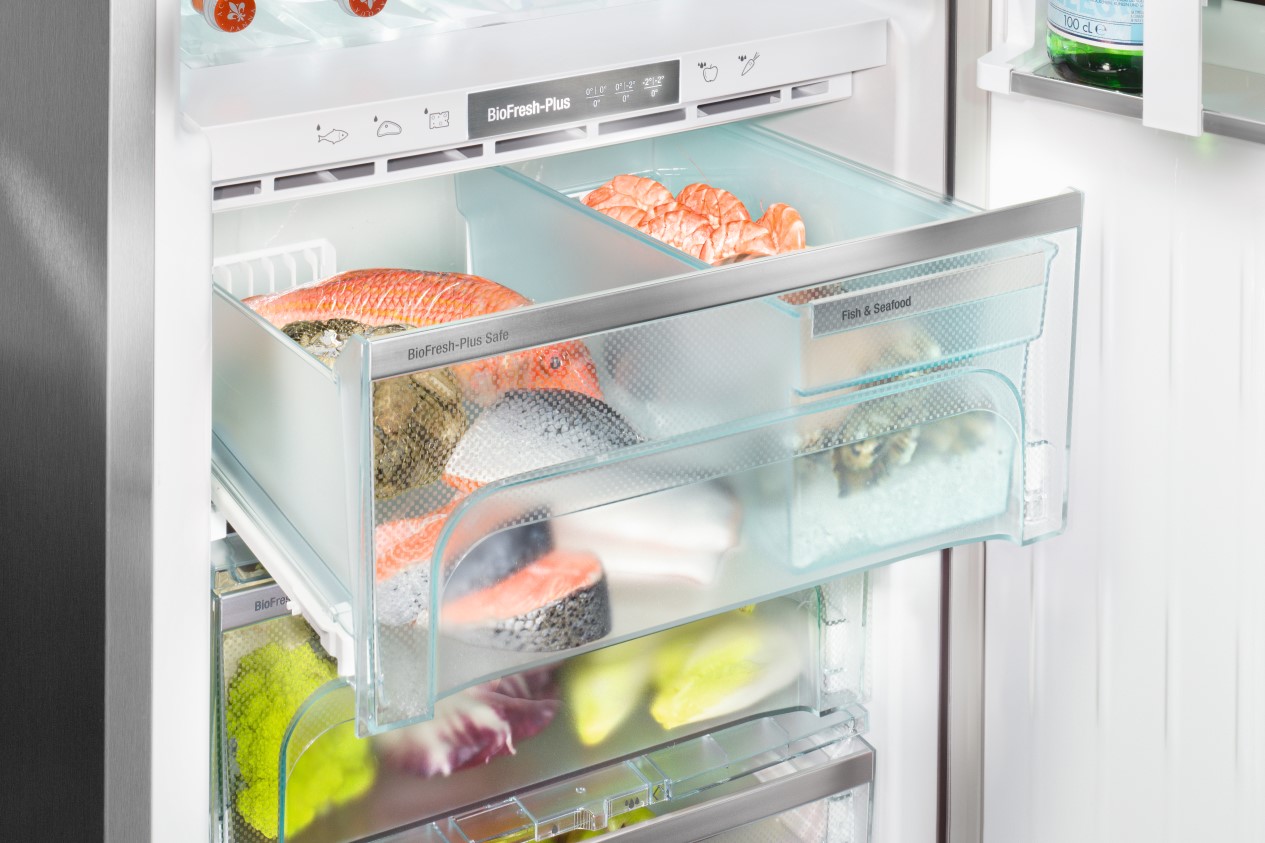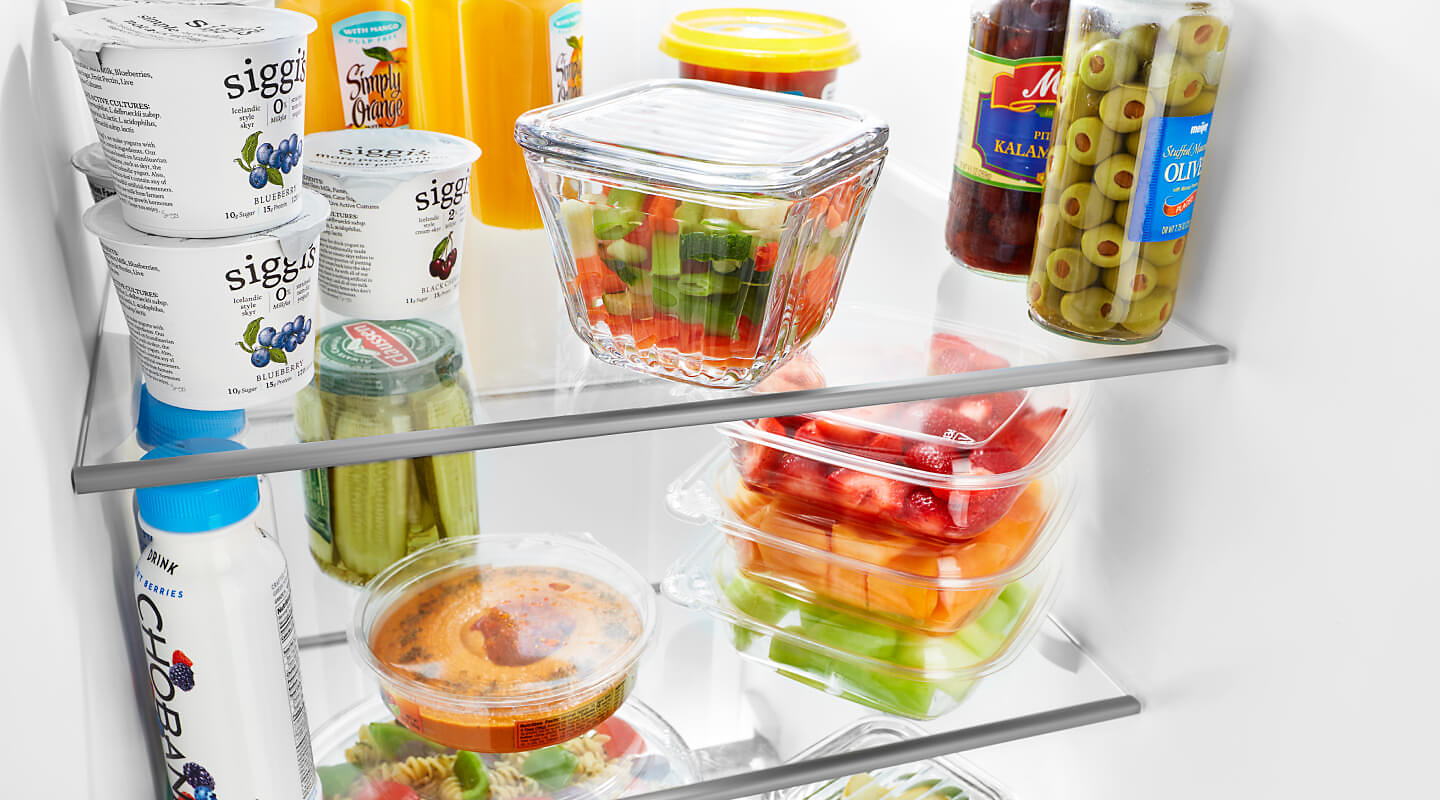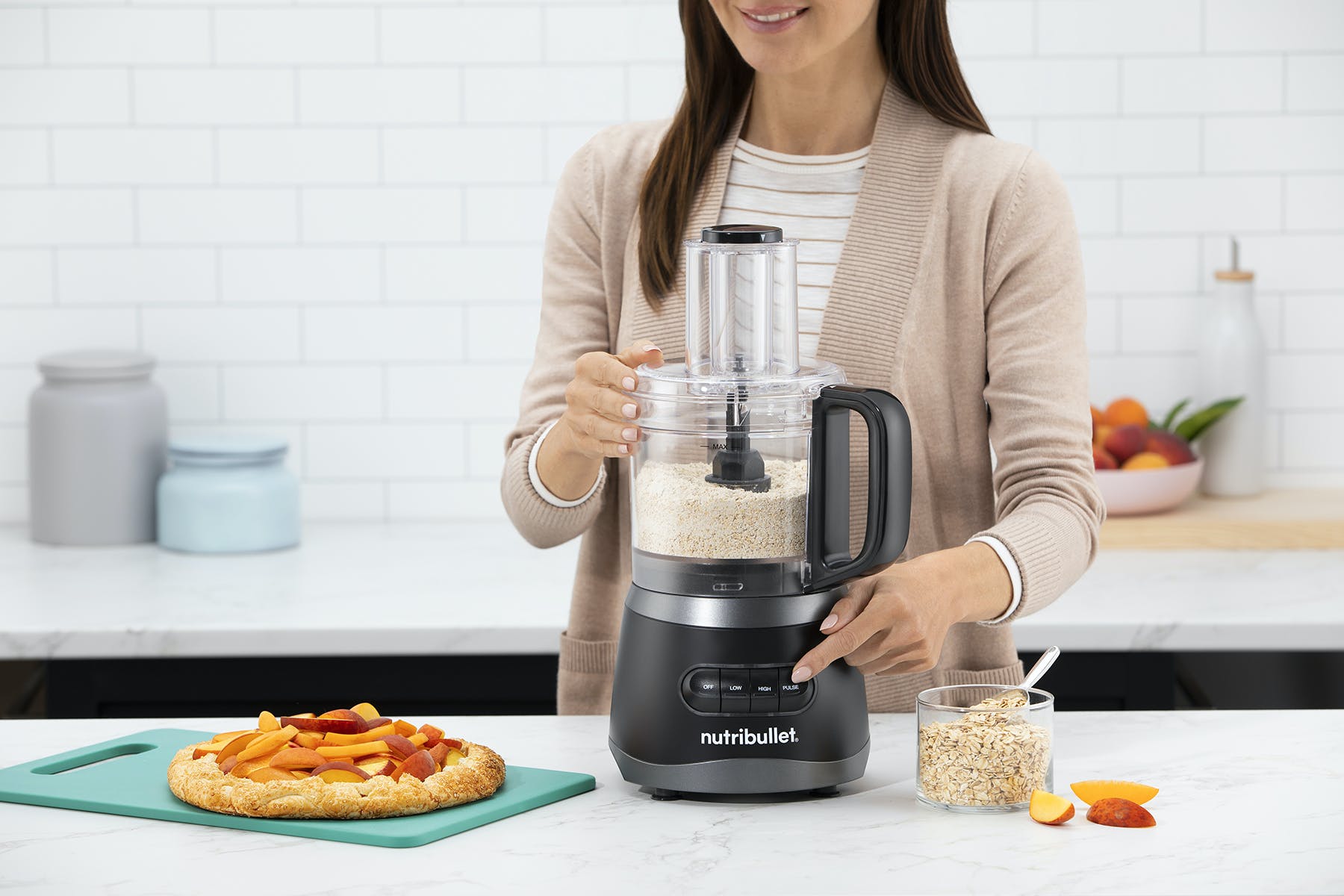Home>Storage Ideas>Kitchen Storage>8 Surprising Foods To Store In The Refrigerator


Kitchen Storage
8 Surprising Foods To Store In The Refrigerator
Modified: February 18, 2024
Discover 8 unexpected kitchen storage ideas and learn why refrigerating foods like flour, onions, and nuts can extend their shelf life.
(Many of the links in this article redirect to a specific reviewed product. Your purchase of these products through affiliate links helps to generate commission for Storables.com, at no extra cost. Learn more)
Introduction
When it comes to kitchen storage, most people think of storing items like canned goods, condiments, and leftovers in their refrigerator. However, there are some surprising foods that can benefit from being stored in the refrigerator as well. Not only can refrigerating these foods extend their shelf life, but it can also help preserve their freshness and flavor.
In this article, we will explore eight unexpected foods that you may not have considered refrigerating before. From avocados to bananas, these foods may surprise you with their ability to thrive in colder temperatures. So, let’s dive in and discover the hidden benefits of storing these foods in your refrigerator.
Key Takeaways:
- Keep your avocados, bread, and hot sauce in the refrigerator to extend their shelf life and preserve their freshness and flavor. Refrigeration can also make avocados easier to peel and pit.
- Refrigerating berries, garlic, chocolate, and bananas can help prevent spoilage, maintain quality, and offer a refreshing twist to your favorite snacks and dishes.
Read more: How To Store Morels In Refrigerator
Avocado
Avocados have gained immense popularity in recent years due to their nutritional value and versatility. However, they can be quite tricky to store, especially when they are ripe and ready to eat. To prevent avocados from over-ripening and spoiling quickly, it is recommended to store them in the refrigerator.
Refrigerating avocados slows down the ripening process, allowing you to enjoy them at your own pace. If you have ripe avocados that you want to save for later use, simply place them in the refrigerator. This will buy you a few more days before they become overly soft and mushy.
To store a whole avocado in the refrigerator, make sure it is ripe but not overly soft. Wrap it in a paper towel or place it in a plastic bag before refrigerating. This will help absorb excess moisture and prevent the avocado from becoming spoiled.
If you have leftover avocado after cutting into it, you can also refrigerate the cut pieces. Simply sprinkle some lemon or lime juice on the exposed flesh to prevent browning, then tightly wrap the avocado in plastic wrap or place it in an airtight container. The cold temperature of the refrigerator will help slow down the oxidation process and keep the avocado fresh for a longer period.
Refrigerating avocados also has the added benefit of making them easier to peel and pit. When avocados are chilled, the flesh contracts slightly, making it easier to remove the pit and scoop out the flesh with a spoon.
So, next time you have a perfectly ripe avocado that you can’t finish in one sitting, don’t hesitate to pop it into the refrigerator. It will stay fresh and delicious for longer, giving you more time to enjoy this creamy and nutritious fruit.
Bread
Bread is a staple in many households, but it can quickly become stale if not stored properly. While most people store bread on the countertop or in a bread box, refrigeration can actually help prolong its freshness.
When bread is exposed to air, the moisture inside begins to evaporate, resulting in a dry and stale texture. By placing your bread in the refrigerator, you can slow down this process and extend its shelf life.
To store bread in the refrigerator, make sure it is completely cooled before wrapping it in a plastic bag or placing it in an airtight container. This will help maintain the moisture content and prevent the bread from drying out.
While refrigerating bread can help keep it fresh, it is important to note that the cold temperature can cause the starch in the bread to recrystallize, making it firmer. If you prefer softer bread, you can simply let it come to room temperature before consuming. Alternatively, you can lightly toast the refrigerated bread to restore its texture and bring out its flavors.
It’s also worth mentioning that freezing bread is another effective way to extend its shelf life. If you have a large loaf or want to save bread for later use, slice it into individual portions and freeze them in airtight freezer bags. When you’re ready to enjoy a slice, simply take it out and let it thaw at room temperature or pop it in the toaster for a quick and easy breakfast option.
So, if you find yourself with leftover bread or want to stock up on your favorite loaf, consider refrigerating it to preserve its freshness and prevent it from going to waste. Your sandwiches and toast will thank you!
Hot Sauce
Hot sauce is a condiment that many people enjoy adding to their favorite dishes to add a kick of flavor and spice. While it may be tempting to simply store hot sauce in the pantry or on the countertop, refrigerating it can actually help preserve its quality and flavor for a longer period of time.
Hot sauce typically contains vinegar, which acts as a natural preservative. However, refrigeration can further enhance its shelf life and prevent it from spoiling. The cold temperature of the refrigerator helps slow down the oxidation process and inhibits the growth of bacteria and mold that can cause the hot sauce to spoil.
When storing hot sauce in the refrigerator, it is best to keep it in its original tightly sealed bottle or transfer it to a small airtight container if you have purchased it in bulk or made it from scratch. Make sure the cap or lid is screwed on tightly to prevent air from entering and compromising the quality of the hot sauce.
Refrigerating hot sauce can also help mellow out the heat over time. If you find that your hot sauce is too spicy for your liking, storing it in the refrigerator can help reduce the intensity of the heat. The cold temperature can slightly alter the flavor profile, making it more mild and enjoyable for those who prefer a less fiery taste.
It’s important to note that refrigerating hot sauce may cause slight separation and thickening. This is a natural process due to the change in temperature and can be easily remedied by giving the bottle a gentle shake before use. The flavor and quality of the hot sauce will not be compromised.
So, whether you use hot sauce sparingly or enjoy it with every meal, storing it in the refrigerator is a great way to prolong its shelf life and preserve its flavor. From tacos to scrambled eggs, your favorite dishes will continue to be enhanced with a dash of chilled hot sauce.
Nut Butter
Nut butter, such as peanut butter or almond butter, is a versatile and nutritious spread that many people enjoy. While it’s common to store nut butter in the pantry, refrigerating it can have its benefits and help maintain its quality.
One of the main advantages of refrigerating nut butter is that it helps prevent the oils from separating. Nut butter tends to have natural oils that may rise to the top over time, resulting in an uneven texture. By keeping nut butter refrigerated, you can slow down this separation process and keep the consistency creamy and smooth.
When refrigerating nut butter, it’s important to ensure that the container is tightly sealed to prevent it from absorbing any odors or flavors from other items in the refrigerator. Store-bought nut butter usually comes in a sealed jar, but if you’re transferring homemade nut butter to a different container, make sure it has an airtight seal.
Refrigerating nut butter can also help extend its shelf life. The cold temperature inhibits the growth of bacteria, mold, and other microorganisms that could cause the nut butter to spoil. This is especially beneficial if you buy nut butter in larger quantities or make your own batches.
It’s worth noting that refrigerated nut butter might become slightly firmer compared to when it’s stored at room temperature. If you prefer a spreadable consistency, you can let the nut butter sit at room temperature for a few minutes before using it. Alternatively, you can spread it on warm toast or mix it into hot oatmeal to help soften it.
If you notice any changes in the flavor, smell, or appearance of the nut butter, it’s important to discard it. While refrigeration can help extend the shelf life, nut butter does have a finite expiration date and can go bad if not consumed within a reasonable time frame.
So, whether you enjoy nut butter on toast, in smoothies, or as an ingredient in baking, refrigerating it can help maintain its quality and prevent any unwanted separation. Your nut butter will stay fresh and ready to spread, making it a delicious and healthy addition to your meals and snacks.
Store eggs in the refrigerator to keep them fresh for longer. The cool temperature slows down the growth of bacteria, extending their shelf life.
Berries
Berries, such as strawberries, blueberries, and raspberries, are delicious and nutritious fruits that are best enjoyed at their peak of freshness. However, these delicate fruits can spoil quickly if not stored properly. Refrigerating berries is a great way to extend their shelf life and keep them fresh for longer.
Berries are highly perishable due to their high water content, and they are also prone to mold growth. By refrigerating berries, you can slow down the oxidation process and inhibit the growth of bacteria and mold that can cause them to spoil.
To store berries in the refrigerator, it’s important to handle them gently to prevent bruising. Remove any damaged or moldy berries before refrigerating the rest. Avoid washing them until you are ready to consume them, as moisture can speed up the deteriorating process. Place the berries in a shallow container lined with paper towels or in a perforated plastic bag to allow for air circulation and reduce moisture buildup.
Refrigerated berries can last anywhere from a few days to a week, depending on their ripeness when purchased. However, it’s best to consume them as soon as possible for optimal flavor and texture.
If you have an abundance of berries and want to preserve them for later use, consider freezing them. Wash and thoroughly dry the berries, then spread them out on a baking sheet in a single layer and freeze until solid. Transfer the frozen berries to airtight freezer bags or containers and return them to the freezer. Frozen berries can be used for smoothies, baked goods, and toppings for yogurt or oatmeal.
When you’re ready to enjoy refrigerated or frozen berries, it’s best to let them come to room temperature or gently rinse them under cold water to remove any excess moisture. This will help restore their juiciness and enhance their natural flavors.
So, whether you enjoy berries as a snack, in salads, or in your favorite desserts, refrigerating them will help maintain their freshness and extend their shelf life. With a bit of care and proper storage, you can savor these vibrant and flavorful fruits for longer periods of time.
Garlic
Garlic is a versatile and flavorful ingredient that is widely used in various culinary dishes. While it is commonly stored at room temperature in many households, refrigerating garlic can help prolong its shelf life and preserve its flavor.
When stored in a cool and dry place, such as a pantry or kitchen cabinet, garlic can last for several weeks. However, refrigerating garlic can extend its shelf life even further, keeping it fresh and flavorful for a longer duration.
To store garlic in the refrigerator, keep it in its whole bulb form. Place the garlic bulbs in a breathable container, such as a mesh bag, or keep them in their original packaging. It’s important to note that refrigeration can cause cloves to become soft or moldy if they are not properly protected. Avoid storing garlic in plastic bags or airtight containers, as the lack of air circulation can promote moisture buildup and accelerate spoilage.
Refrigerating garlic helps slow down the natural enzymatic reactions that can cause it to sprout or become bitter. The cold temperature of the refrigerator inhibits these reactions, preserving the garlic’s freshness and flavor for a longer period.
If you have peeled or chopped garlic that you want to store, it is best to keep it in an airtight container in the refrigerator. Garlic cloves can be peeled and chopped in advance and placed in a jar or small container with a lid. Drizzle a little olive oil over the garlic to prevent it from drying out, then seal tightly and refrigerate. This prepped garlic can be conveniently added to your recipes, saving you time and effort during cooking.
Another benefit of refrigerating garlic is that it makes it easier to peel. Chilled garlic cloves are firmer and less sticky, allowing you to effortlessly remove the skin without the usual hassle.
When using refrigerated garlic, let it come to room temperature before cooking to allow its full flavor to develop. You can mince, crush, or slice the garlic as desired and incorporate it into your favorite recipes.
So, if you want to prolong the shelf life of your garlic and keep it fresh and flavorful, consider refrigerating it. This simple storage method will ensure that you always have garlic on hand for adding delicious taste to your culinary creations.
Chocolate
Chocolate is a beloved treat enjoyed by many, but it can be sensitive to temperature fluctuations. While most people store chocolate at room temperature, refrigerating it can offer some surprising benefits.
One of the main advantages of refrigerating chocolate is that it helps prevent it from melting. If you live in a warm or humid climate, refrigerating your chocolate can help maintain its shape and prevent it from becoming a sticky mess. This is especially important for delicate chocolates or those with fillings that can easily liquefy at higher temperatures.
Refrigerating chocolate can also extend its shelf life. The cold environment helps slow down the oxidation process, preventing the formation of white spots or blooms on the surface of the chocolate. While these spots are harmless and do not affect the taste, they can be visually unappealing.
When refrigerating chocolate, it’s important to wrap it tightly or store it in an airtight container to protect it from absorbing any odors from other foods in the refrigerator. Chocolate has the ability to absorb strong aromas, which can alter its taste.
Before enjoying refrigerated chocolate, it’s recommended to let it come to room temperature gradually. This helps preserve the texture and flavor of the chocolate. If you bite into refrigerated chocolate directly from the refrigerator, it may not melt as smoothly on the palate and the flavors may not fully develop.
It’s worth noting that not all types of chocolate benefit from refrigeration. Dark chocolate and milk chocolate generally respond well to refrigeration, while white chocolate can become dry and brittle when exposed to cold temperatures for extended periods. It’s best to check the packaging or consult the manufacturer’s guidelines for specific recommendations.
If you have a surplus of chocolate that you want to store for a longer period, freezing it is also an option. Wrap the chocolate tightly in plastic wrap or aluminum foil, place it in an airtight container, and store it in the freezer. Frozen chocolate can last for several months and be used for baking or enjoying a cool and refreshing treat during warmer months.
So, if you want to preserve the quality and shape of your chocolate or simply prefer a chilled treat, consider refrigerating it. Careful storage and handling will ensure that your chocolate remains delicious and satisfying, ready to be savored whenever the craving strikes.
Bananas
Bananas are a popular and nutritious fruit that is commonly stored at room temperature until they ripen. However, refrigerating bananas can have its advantages, especially if you want to extend their shelf life or slow down the ripening process.
When bananas are refrigerated, the cold temperature slows down the enzymatic reactions that cause them to ripen. This can be beneficial if you have a bunch of bananas that are ripening too quickly and you want to preserve them for a longer period.
To refrigerate bananas, it is best to store them in their peel. However, if you prefer to remove the peel, place the banana in an airtight container or wrap it in plastic wrap to prevent it from absorbing any odors from other foods in the refrigerator.
Refrigerating bananas can result in a change in texture and appearance. The cold temperature can cause the peel to turn brown, but this doesn’t affect the quality or taste of the banana inside. If you prefer your bananas to have a yellow peel, you can remove them from the refrigerator and let them come to room temperature before consuming.
One advantage of refrigerating bananas is that it can help slow down the growth of bacteria and mold. This can be particularly useful if you buy a large quantity of bananas and want to ensure they stay fresh for a longer period. Just make sure to check the bananas regularly and remove any that start to show signs of spoilage.
Refrigerated bananas can also be a refreshing treat, especially on a hot summer day. They have a slightly firmer texture and a cooler temperature when compared to room temperature bananas, making them especially satisfying to eat.
If you have overripe bananas that you don’t want to waste, you can place them in the refrigerator to extend their usability. The cool temperature can slow down further ripening and give you more time to use them for baking or making smoothies.
So, whether you want to extend the shelf life of your bananas or enjoy a chilled snack, refrigerating them can be a convenient option. Experiment with different ripening stages to find the perfect texture and taste that suits your preferences.
Read more: How To Store Butter Without Refrigeration
Conclusion
Refrigeration is typically associated with preserving perishable foods and keeping them fresh for longer. However, there are certain surprising foods that can benefit from being stored in the refrigerator as well. From avocados to bananas, bread to hot sauce, nut butter to berries, and even chocolate and garlic, refrigeration can offer numerous advantages in terms of extending shelf life, preserving flavor, and preventing spoilage.
By understanding the unique characteristics of each food item and how refrigeration affects it, you can make informed decisions about how to store them for optimal freshness. From slowing down the ripening process of avocados to preventing bread from going stale, refrigeration helps maintain the quality and taste of these foods, ensuring they are at their best when you’re ready to enjoy them.
Refrigerating hot sauce and nut butter not only helps preserve their flavors but also prevents oil separation and keeps them in a spreadable consistency. Berries, highly perishable fruits, benefit from refrigeration as it slows down the growth of bacteria and mold. Chocolate, a delicate treat, stays firm and maintains its shape when refrigerated, preventing melting. And while garlic can be stored at room temperature, refrigeration helps prolong its shelf life and retains its freshness.
It’s important to note that while refrigeration can offer benefits for these foods, individual preferences and storage requirements may vary. It’s always a good idea to consider factors like the specific product, its packaging, and any recommended storage guidelines provided by the manufacturer.
Overall, incorporating these surprising foods into your refrigerator storage can help reduce food waste, save money, and ensure that you have fresh ingredients readily available for your culinary adventures. So, the next time you’re organizing your kitchen, consider making room in your refrigerator for these unexpected items. The results may just surprise and delight you!
Frequently Asked Questions about 8 Surprising Foods To Store In The Refrigerator
Was this page helpful?
At Storables.com, we guarantee accurate and reliable information. Our content, validated by Expert Board Contributors, is crafted following stringent Editorial Policies. We're committed to providing you with well-researched, expert-backed insights for all your informational needs.














0 thoughts on “8 Surprising Foods To Store In The Refrigerator”